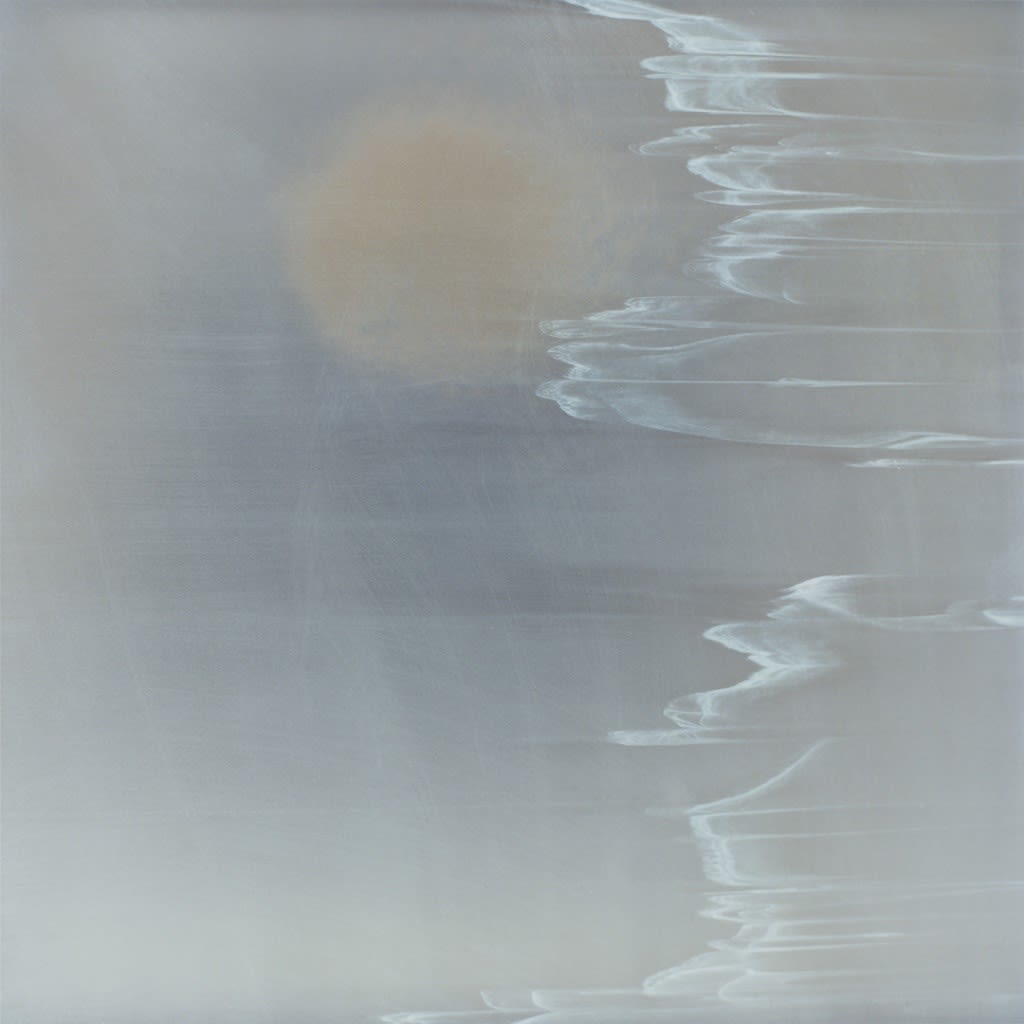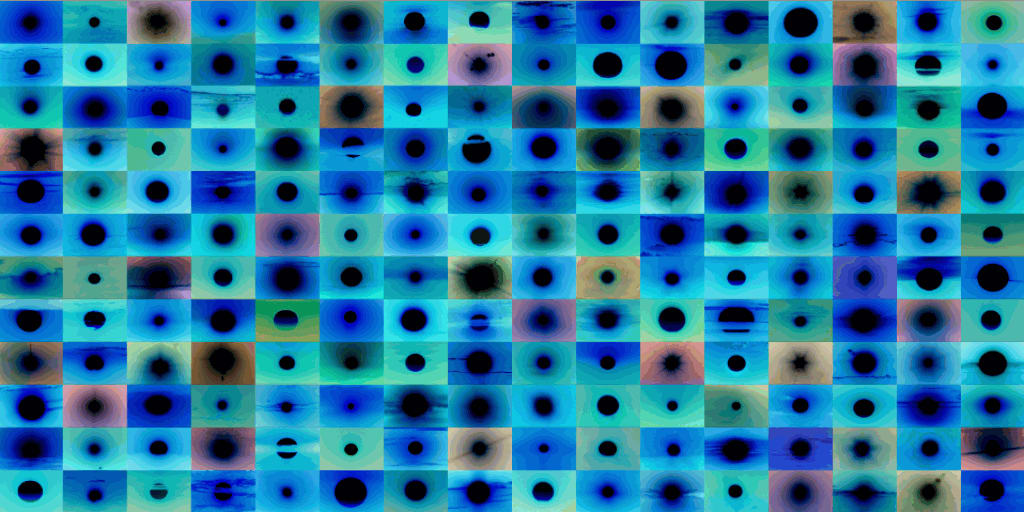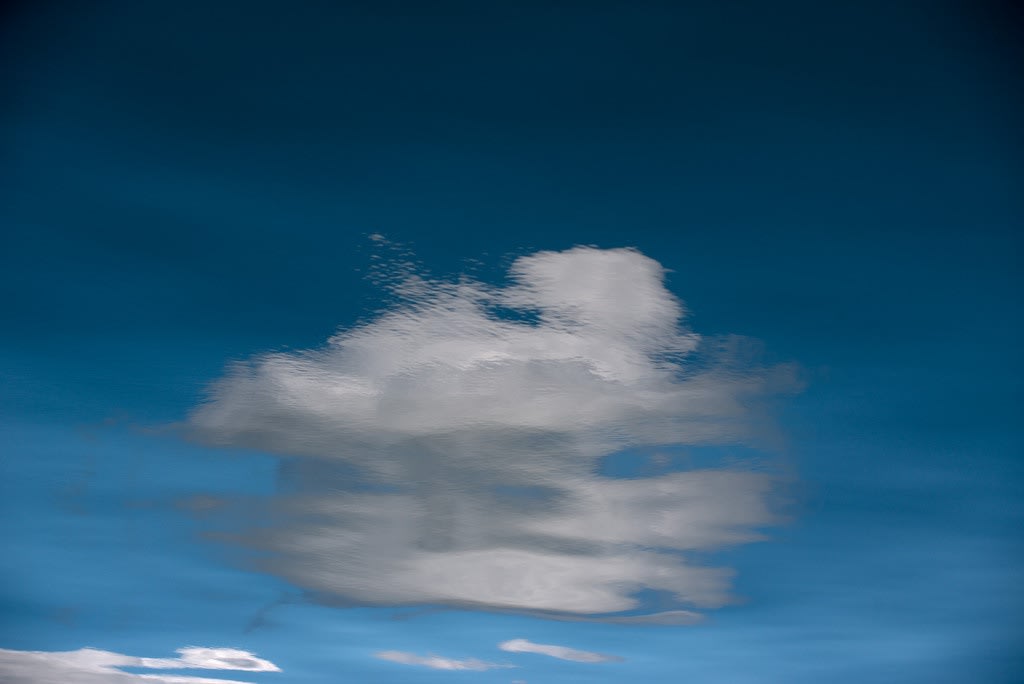Is it important to classify a photograph as contemporary or not? Photography done in our time is a reflection and encourages us to consider what we see. Roland Barthes, in “Camera Lucida: Reflections on Photography” stated: “The photograph does not necessarily say what is no longer, but only and for certain what has been”. (5) Susan Sontag, in her book “On Photography” (6) said: “Photographed images do not seem to be statements about the world so much as pieces of it, miniatures of reality that anyone can make or acquire”. (7) Contemporary photography encapsulates or reflects back to us an opinion about our world today. The world is not static, and so photography is not static. Values, societies, philosophy, standards for living, technology, politics and geopolitical realities constantly change. (8) “What we perceive depends partly on what we have been taught to perceive.” (9) Studying a photograph can help us see more and/or see differently.

At any point in time, a photograph is a “contemporary” image. For the photograph to be “contemporary” it does not have to ignore a prior historical context, or that it is influenced by the work of others in the past, or by other current artists. The photographer may even have appropriated or combined previously taken images from any prior point in time giving that image a contemporary re-birth. (10)

Contemporary photography has changed as the technology for capturing images of light has changed. (11) Photography has evolved beyond the literal and familiar capture of images of the world mechanically through a camera body, with or without the use of a lens. It includes the imposition of the artist’s eye and technique on both the use of the camera, lens and post-processing of the image. (12) It includes, and re-visits, the impression of light on light sensitive material directly or though different matter. These techniques, while seemingly new, date back to the origins of photography. (13) Contemporary photography may be cameraless and lensless work, photographs without pictures, made with chemicals on the surface of light sensitive materials, or through water by moonlight or through colored filters. (14) It reminds us that the word photograph comes from the Greek words: photo for “light,” and graph for “drawing” , or drawing with light. (15) Unlike Sontag’s comment above, not everyone may be able or willing to create works such as these.

There have been many types of photographic images taken, by many different photographers, who have created memorable images. “Genre” (16) is a framework that might be used (see the list at the end of this article) (17) to help organize our thoughts about contemporary photography. Each genre can represent a type of contemporary photograph. Photographer Guido Guidi recently commented in an interview for Aperture Magazine: “I was interested in everything: the portrait of a person, of a house, of a wall… Nothing was unimportant; everything was worthy of attention.” (18) The capture of an image as a snapshot (vernacular photograph) (19), photojournalistic, or many other forms, can be a documentary capture of an event, place or person at a point in time with no or little artistic intent. Some genres of photography may lend themselves more to intentional creative expression. (20) Yet, if we are evaluating contemporary photography, understanding whether, within a genre, we are discussing works from the same time period or comparing works from different “contemporary” periods, helps us to see or evaluate the artistic content, or changes of expression over time through different lenses (or not) of examination of that time period.
Developing a view on appreciating photography, whether contemporary, vintage or any other type or genre comes from looking at many, many images, to determine what one likes. (21) What can help in assessing contemporary photography is to read what other commentators and educators have written. In addition to those cited already, some important authors addressing the art of photography include: John Szarkowski (22), Tod Papageorge (23), Robert Adams (24) , Geoff Dyer (25) and Peter Bunnell (26). A work referenced as contemporary photography does not also make it art. (27)
Contemporary photography then is a difficult term to define. It does not permanently adhere as a label on any one image. It is a concept that changes as time periods change and move forward. It is a general expression for what the viewer can relate to and appreciate at that moment in time. It may be applied to a group of images created by a group of photographers working during a similar period of time with similar, or dissimilar, motivations, style or influences. Today’s contemporary photography inherits attributes from what was “contemporary” in prior periods, or it can break completely from the past creating a new road for others to follow. The study of prior periods is important because it creates a history, or marker, for new work to move beyond and create new paths as photography evolves. Whether it rises to a level to be referred to as contemporary art photography is both an individual and a collective agreement for appreciation of that style of work. (28) Regardless, any style of “photography”, whether a snapshot or purposeful creative expression, becomes, at this moment in time, “contemporary photography”.
Some Genres of Photographic Images:
Abstract, Aerial, Architectural, Astro(space), Conceptual, Constructed Environments, Documentary, Fashion, Glamour, Landscape, Medical/Scientific, Memory, Micro-photography, Narrative,Nature, Night, Non-lens based and/or Cameraless, Nudes, Performance, Photo Collage or Photo Montage, Photojournalism, Polaroid-type, Portrait, Still Life, Street, Time-lapse, Underwater, Vernacular.
If you have other perspectives onwhat is contemporary photography or views about other parts of this article, please send your comments to us.
Notes:
- Webster’s New World Dictionary, 2004, 4th Edition, Wiley Publishing, Inc.
- “The definition of vintage is not quite uniform, but in its strictest version, the photographer should have photographed and printed from that negative within one year. As we get further from the negative date, the window of ‘vintage’ can often be expanded to cover five or even ten years.” – From Hackelbury Fine Art, London, UK at http://www.hackelbury.co.uk/read…questions.html. So a photograph can be both Contemporary at a point in time, or “Vintage” at a later subsequent point in time. In my mind, its generally a print by that photographer, from the original negative, done is some proximity to the time the image was taken; but, not an image reproduced but others at a later date such as a photographer’s estate. Such a later image might be termed a “Modern” photograph. See the later footnote and definition.
- The term referring to a photograph as “Modern” can be mis-understood. In this Commentary, it references a re-print of an image from the original negative by someone other than the photographer, or done much later by the photographer after the image was originally taken, and beyond the time the market would consider it a “vintage” print. The term as used in this Commentary is not in reference to periods in art history. With reference to periods of art history, one could look at the following sample definition: “Modern Art: Art from the Impressionists (say, around 1880) up until the 1960s or 70s. Contemporary Art: Art from the 1960s or 70s up until this very minute.“ From http://arthistory.about.com/od/modernart/f/what_is.-Eoj.htm
- Lyle Rexer, author of “The Edge of Vision: The Rise of Abstraction in Photography”, commented an article on “Rediscovered Books and Writings: Photography: Venice ’79” in the Fall 2015 issue of Aperture Magazine that “… photography’s position at the time might be described as ‘between’ – between art and technology, between expression and documentation, between politics and personal vision”. The statement seems as relevant today as it was in 1979.
- Roland Barthes, “Camera Lucida:Reflections on Photography”, 1980, Hill & Wang.
- Susan Sontag, “On Photography”, 1977, Picador of Farrar, Straus and Giroux.
- Many of us take photographs everyday. These every day images are often referred to as Vernacular photography, but can be very important images. [ See my previous Commentary of May 2015 on Naoya Hatakeyama. ] The term “Vernacular Photography” is also difficult to define or to find a definition. A definition from Wikipedia is : “Vernacular photography is the creation of photographs, usually by amateur or unknown photographers both professional and amateur, who take everyday life and common things as subjects. Though the more commonly known definition of the word “vernacular” is a quality of being “indigenous” or “native,” …. Examples of vernacular photographs include travel and vacation photos, family snapshots, photos of friends, class portraits, identification photographs, and photo-booth images. Vernacular photographs are types of accidental art, in that they often are unintentionally artistic.“
- See the image below “Alchemical tides” by Lydia Goldblatt, a photographer from the UK. The images is the use of chemicals directly on to light sensitive paper without using a camera or lens in a traditional sense. Describing the image, Lydia commented: “Photography is itself a combination of object and idea, referent and symbol, sight and perception. So, in this series I am using abstraction, construction and literal form to establish a visual terrain between the cognitive and objective world.”
- “The Power of Form: A Psychoanalytic Approach to Aesthetic Form”, by Gilbert Rose, 1980, International Universities Press, Inc.
- See the “Suns” and “Negative Suns” work of Penelope Umbrico. http://www.penelopeumbrico.net/index.html Catlin Moore, gallery director of Mark Moore Gallery described Penelope’s work: “Penelope Umbrico offers a radical reinterpretation of everyday consumer and vernacular images.…She finds these moments in the pages of consumer product mail-order catalogs, travel and leisure brochures; and websites like Craigslist, EBay, and Flickr. Identifying image typologies—candy-colored horizons and sunsets, books used as props—brings the farcical, surreal nature of consumerism to new light.” http://www.markmooregallery.com/artists/penelope-umbrico/
- Read “After Photography” by Fred Ritchin, 2009, W.W. Norton & Company.
- See “Faking It: Manipulated Photography before Photoshop” by Mia Fineman. Previously an exhibition and now a book. The Metropolitan Museum of Art, New York. Distributed by Yale University Press. 2012.
- For example, see the photograms of Anna Atkins. http://www.getty.edu/art/collection/artists/1507/anna-atkins-british-1799-1871/
- The history of abstraction is traced by Lyle Rexer in his book “The Edge of Vision: The Rise of Abstraction in Photography”, 2013, Aperture. See in particular Chapter 6, “This is [Not] a Photograph”, where he discusses and shows images of photographic artists like Marco Breuer, Edward Mapplethorpe, Richard Caldicott, and Shrine Gill among others. Note also a recent exhibition by The Getty of “Light, Paper, Process: Reinventing Photography” that featured artists Matthew Brandt, Marco Breuer, John Chiara, Chris McCaw, Lisa Oppenheim, Alison Rossiter, and James Welling, curated by Virginia Heckert. Listen to the audio comments on the exhibition by Ms. Heckert and four of the artists. http://www.getty.edu/art/exhibitions/process/
- Lou Vest’s image below is the reflection of light and clouds on the ocean’s surface. Vest is a photographer and Ship Pilot that uniquely captures light and image from the deck of a ship.
- A genres can be defined as: “ a type or class… A category of artistic composition, as in music or literature, marked by distinctive style, form or content…”. The American Heritage Dictionary of the English Language, 2000, 4th Edition, Houghton Mifflin Company.
- One can argue about whether any list is complete or accurate. This list is included to allow the reader some appreciation for the range and diversity of images captured as “photographs”.
- From the interview of Guido Guidi by Antonello Frongia, Historian of Photography at the Universita Roma Tre , p. 51 in the recent Fall 2015 issue of Aperture Magazine.
- A definition of “vernacular photography” from wikipedia is “the creation of photographs, usually by amateur or unknown photographers both professional and amateur, who take everyday life and common things as subjects.“ https://en.wikipedia.org/wiki/Vernacular_photography
- Note the current controversy reported in the New York Times article, “At Visa Pour l’Image Festival, Photojournalists at the Ramparts”, September 4, 2015,“ The prestigious World Press Photo contest caused an uproar in March and damaged its standing when it bestowed, then revoked, a top prize to an Italian photographer who had misrepresented the location of an image. Amid an intense debate about the line between photojournalism and art photography, many photojournalists were outraged that images in which the photographer, Giovanni Troilo, had intervened — by using a remote-control flash, for example — had been categorized as reportage.
- The most important consideration for appreciating a photograph as just a photograph or as “art” is whether you like it or not; not how it is labeled.
- John Szarkowski, “The Photographer’s Eye”, 2009, The Museum of Modern Art
- Tod Papageorge, “Core Curriculum: Writings on Photography”, Aperture, 2010
- Robert Adams, “Why People Photograph”, Aperture, 1994
- Geoff Dyer, “The Ongoing Moment”, Vintage Books, a division of Random House, Inc., 2007.
- Peter C. Bunnell, “Inside the Photograph: Writings on Twentieth-Century Photography”, Aperture, 2009
- Read “The Photograph as Contemporary Art”, by Charlotte Cotton, Third Edition, 2014, Thames&Hudson:World of Art, which offers its own unique framework.
- It is beyond the scope of this paper to define what is “Contemporary Art Photography”. See a very interesting article in The Guardian: “Photography: Is it Art?” http://www.theguardian.com/artanddesign/2012/oct/19/photography-is-it-art

